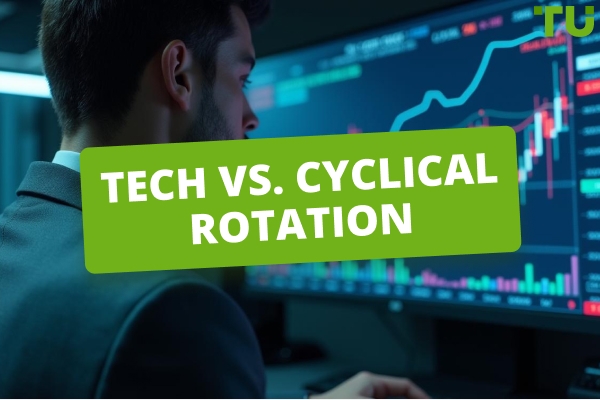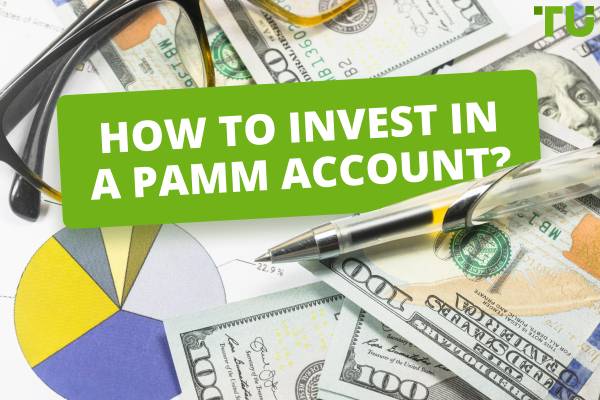Strategic Ways To Transform $10,000 Into A $100,000 Fortune

Top commission-free stock broker - eToro
Best stocks to invest in right now:
-
TMUS - Leading 5G carrier expanding coverage.
-
AMD - Opportunities in CPU, GPU and data centers.
-
META - Dominant social media pivoting to virtual reality.
-
GOOGL - Advertising giant driving innovation.
-
MSFT - Cloud computing and productivity software leader.
-
NFLX - Streaming pioneer maintaining edge.
-
TSLA - Driving EV future, self-driving and battery innovations.
-
HLT - Top lodging brand, strong recovery post-pandemic.
-
DDOG - Monitoring platform benefiting from cloud adoption.
-
CRM - Customer engagement standard.
So, you have $10,000 in disposable income or savings, and you’re wondering how you can transform that into more capital – maybe even as much as $100,000. While there are many avenues you can take as an investor trying to multiply your capital by 10 times, it can be hard to decide on one. Generally, the most low-risk investments provide the slowest growth, while those with higher levels of risk provide the most potential to rapidly expand your capital, though not without inducing nail-biting anxiety over the danger of losing it all. To turn $10,000 into $100,000 in ten years, you’d have to see returns of 23.249% annually – an ROI that’s hard to come by.
In this article, we’ll take a look at some of the more popular ways to invest $10,000 and to turn $10k into $100k, starting from the less risky, stable investments to the more high-risk ones for those of you more comfortable with risking it all. We’ll touch on the pros and cons of each investment asset and explain briefly how each one works, so you can decide which one is best for you.
Typically, low-risk investments provide relatively slow growth, while high-risk investments can lead to substantial gains but involve the risk of huge losses.
| Investment ways | Risk | Average Annual Return | Best for |
|---|---|---|---|
1 Bonds |
Low |
4.31% |
Stability |
Moderate |
9.95% |
Growth |
|
3 Gold |
Moderate |
7.9% |
Inflation Protection |
4 Real Estate |
Low |
10.6% |
Wealth Appreciation |
5 REITs |
Low |
11.8% |
Passive Income |
6 Savings Accounts |
Low |
4-6% |
Guaranteed Returns |
7 CDs |
Low |
1-2% |
Stability |
High |
671% (BTC) |
Volatility |
|
9 Stocks |
Moderate |
About 10% |
Opportunity, volatility |
10 ETFs, Index funds |
Moderate |
7-10% |
Growth |
-
How to flip 10K into 100k?
There are countless ways you can do this, from starting a business to buying real estate, but possibly the most accessible way is through investing. You could invest in growth stocks, stock funds, bonds, dividend-paying stocks, or any other investment that has low to moderate risk and is expected to grow reliably in the future.
-
Which investment has the best long-term potential, and why?
Generally, the stock market has historically provided the best returns. Over the past century, the average annual return has been 10% on the S&P 500 Index, which lists the 500 best-performing stocks on the US stock market. No investment comes without risk though, and some years may see downturns in the US stock market, though overall, the US stock market has seen consistent growth.
-
How can wealth be created in the long term?
First, you need a long-term growth mindset and not get sucked into get-rich-quick schemes, then formulate a plan. Make sure you are only investing expendable income, and settle any high-interest debts. Invest in a diversified portfolio in low to moderate-risk assets. Make regular deposits into your portfolio and stick to your predefined investment goals.
-
What is a good 10-year return on investment?
Generally, generating 10% per year is realistic and a good return on your investment. This could be achieved through investing in stocks or stock indices. A 10% cumulative increase per year on a $1000 investment would leave you with $2,593 after ten years.
What you need to do before investing 10k
Before you can begin your investment journey, which is a large undertaking in and of itself, you should take several steps to prepare yourself, to optimize your investment’s effectiveness. Those steps are:
-
Build Emergency Fund: Before investing, make sure to have the safety net of an emergency fund covering 3-6 months of living expenses to weather unexpected expenses. You could set aside a portion of your funds in a readily accessible account, like a high-yield savings account.
-
Pay Off Debts: When deciding to invest and grow your wealth, it’s crucial to pay off any unresolved debts, particularly high-interest ones. High interest debts usually cost more per year than you would make investing, so it makes more sense to pay these off first. High-interest debts can erode your investment gains, and paying them off reduces financial stress and increases your capacity to invest. Prioritize paying off credit card debts or bank loans, allocating funds to pay them off systematically.
-
Assess Risk Tolerance: How comfortable are you with risk? Understand your comfort with risk by evaluating your reaction to market fluctuations and uncertainties. You can do this by taking risk tolerance questionnaires or using a financial advisor. Align your portfolio with your emotional capacity as it will influence your investment choices.
-
Outline Goals: Clearly outline your investment time horizon and short-term to long-term financial objectives to determine a roadmap for your investment choices. Identify what specific objectives you have, like buying a home, funding education, or retiring comfortably. Assign timeframes and estimated costs.
-
Create Investment Plan: Tailor your investment strategy to align with the unique financial situation, goals, and risk tolerance determined in the previous steps. You could consult with a financial advisor to create a diversified portfolio that suits your needs, and should consider various asset classes based on your risk appetite.
High-Yield Savings Accounts and CDs
A high-yield savings account is like a savings account, where you deposit your capital and accrue interest, but with a much higher return than a standard savings account. High-yield savings accounts can pay up to 10 to 12 times more than a standard one. They’re typically offered by online banks, which don’t have the same overhead costs as traditional banks and have grown in popularity in recent years. Money is often protected up to a certain amount (usually in the tens of thousands), and transfer between the high-yield account and your checking account is easy and swift.
Another type of savings account offered by banks is a Certificate of Deposit (CD). CDs require you to deposit a set amount of money and leave it in the account untouched for a prespecified period of time (anywhere from 30 days to five years), while it accumulates interest at a fixed rate determined by numerous factors, such as the general market’s health. Investments in CDs are typically protected by government institutions, making them a safe and stable investment.
👍 Pros
• Better Interest Rates: Both high-yield accounts and CDs offer higher interest rates than you would get using a traditional savings account. CDs interest rates are fixed, while high-yield account rates may change, but both are typically a lot higher than normal savings accounts.
• Low Risk: Both are considered low-risk investments when compared to stocks or real estate investments. They are not subject to market conditions so can preserve capital safely.
• Insurance: Funds in CDs and high-yield accounts are often insured by the FDIC or NCUA, ensuring the safety of your deposits up to a certain limit.
• Accessibility: Funds in both CDs and high-yield savings accounts are generally accessible, allowing for withdrawals when needed. However, CDs may have penalties for early withdrawals.
👎 Cons
• Impact of Inflation: Both CDs and high-yield savings barely beat typical inflation rates, potentially reducing the real returns and purchasing power of your money.
• Opportunity Cost: Both options may have lower returns compared to riskier investment options. Choosing these lower-risk options could mean missing out on potentially higher earnings.
• Slow Growth: Though both types of savings accounts offer higher returns than traditional savings accounts, they don’t have as high an ROI as other riskier investments.
• Penalties (CDs): CDs have fixed terms, and withdrawing funds before the maturity date may result in penalties. This lack of liquidity can be a drawback if you need immediate access to your money.
High-yield savings accounts and Certificates of Deposit accounts are stable investments that offer moderate returns with minimal risk. They’re best for those looking to kickstart their capital growth before moving on to investments that offer higher returns.
Treasury Securities and Bonds
As you embark on the journey to transform a $10,000 investment into $100,000, Treasury Inflation-Protected Securities (TIPS) and other bonds serve as bedrock components, offering stability, reliable income, and protection against inflation.
Treasury Securities, including TIPS, represent debt issued by the U.S. Department of the Treasury. Investors essentially lend money to the government in exchange for periodic interest payments and the return of the principal amount upon maturity. They are considered one of the safest investments as they’re backed by the faith and credit of the US government. They come in the form of Treasury Bills, Treasury Bonds, and Treasury Notes, and can be bought directly from the US government or through brokers. The safety provided by Treasury securities means they have relatively low yields. Interest paid on them is taxable.
Bonds, a broader category, encompass various fixed-income securities representing debt obligations. Sometimes referred to as fixed-income or fixed-interest investments, bonds come in various forms, including government bonds, municipal bonds, corporate bonds, and specialized bonds, each with unique features and risk profiles. Essentially, when you buy a bond, you are lending money to the issuer in exchange for periodic interest payments and the return of the principal amount at the bond's maturity.
👍 Pros
• Safety and Security: Treasury securities and bonds are generally considered low-risk investments, especially when issued by stable entities like the U.S. government. They provide a high level of safety and security for investors.
• Steady Income: Both treasury securities and bonds typically offer a predictable stream of income through periodic interest payments. This can contribute to a steady income stream for investors.
• Potential for Capital Preservation: Bonds, including treasury securities, offer the potential for capital preservation. The return of the principal amount at maturity, plus the payments allocated during the bond’s holding, provides a higher-than-normal level of financial security for investors.
👎 Cons
• Lower Potential Returns: Compared to riskier investment options, treasury securities and bonds generally offer lower potential returns.
• Interest Rate Sensitivity: Bond prices are inversely related to interest rates. Changes in interest rates can impact the market value of existing bonds. Rising rates can lead to a decline in bond prices, affecting overall returns.
• Impact of Inflation: Treasury securities and bonds may struggle to outpace inflation, potentially reducing the real purchasing power of returns over time.
• Lack of Liquidity: Certain bonds, especially those with longer maturities, may lack liquidity. Liquidating these bonds before maturity can be challenging and may result in lower prices.
Overall, bonds serve as key components in diversified investment portfolios, offering income, capital preservation, and risk mitigation.
Stock Market Investments
One way to turn your $10,000 investment into $100,000 is to invest in the stock market, which can be done through direct stock investments, ETFs, and mutual or index funds. The stock markets of most major economies have seen consistent growth over time, making them a reliable means for growing your capital.
Direct stock investments provide the opportunity for hands-on, individual stock selection, allowing you to capitalize on the growth potential of specific companies, though knowing which companies to invest in takes additional research, and focusing on a few stocks could lead to missed opportunities from others. If you had invested in META in November 2022 (at $90 per share) you’d have made over a 500% return in the past 14 months, though being able to foresee this would have required a deep market understanding (and luck) which many investors don’t have. Individual stocks can provide huge returns but can also lead to massive losses.
To spread your investment across a wider selection of securities including stocks, you could invest in ETFs. Diversification, risk management, and ease of trading make ETFs an attractive option, offering exposure to a basket of stocks, commodities, or bonds. ETFs, with their low fees and broad market exposure, offer a convenient and cost-effective way to diversify across various assets. Broad market ETFs offer average annual returns of 7-10% and are generally considered low risk.
Index mutual funds are similar to ETFs except are not purchased on the stock market (like ETFs). They are pooled investments that are passively managed and try to replicate the performance of a financial market index such as the S&P 500. Mutual and index funds provide a professionally managed approach, leveraging the expertise of fund managers to curate a diversified portfolio and providing a hands-off approach for investors. Over long time horizons, index mutual funds generally provide higher returns than an actively managed stock portfolio. The S&P 500 index has returned an annual average of 10.26% since its inception in 1957.
Let’s look at the benefits and drawbacks of investing in the stock market generally, including ETFs and index mutual funds.
👍 Pros
• Dividend Payments: Certain stocks, and most ETFs and index mutual funds pay dividends, providing an additional source of income for investors.
• Market Exposure: All three options provide exposure to the broader market, allowing you to participate in the overall performance of various sectors and industries.
• Liquidity: Stocks, ETFs, and index funds are generally liquid investments, allowing you to buy or sell shares easily on the open market, meaning you can begin or halt investing with little trouble.
• Professional Management (ETFs and Index Funds): ETFs and index funds are managed by financial professionals, providing a hands-off approach for those who may not have the time or expertise to manage individual stocks.
• Growth Potential: Stocks, ETFs, and index funds all offer the potential for capital appreciation over time, providing you with an opportunity for long-term growth.
👎 Cons
• Market Risk: All three investment options are subject to market risk, meaning economic downturns or adverse market conditions can impact the value of your holdings. They are more high risk than bonds or savings accounts, but less risky than assets like cryptocurrency.
• Volatility: Stocks, ETFs, and index funds can experience price volatility. Rapid price fluctuations may occur, especially in response to market news or events.
• Emotional Impact: The volatility of the market can evoke emotional responses. Emotional decision-making, such as panic selling during market downturns, may impact investment outcomes.
• No Guaranteed Returns: Like most investments, they do not guarantee positive returns. Their performance is influenced by market conditions and other factors.
If you are interested in the prospect of investing in ETFs, you should find this article useful: Top 7 High-Dividend ETFs To Invest In Long-Term
Real Estate Investments
Many investors flock to real estate as a means of capital growth, due to its status as a tangible, brick-and-mortar investment and property’s historical ability to generate sizeable returns. Whether you’re investing in purchasing your residence to sell later on, or investing in property outside of your residence, real estate is almost always guaranteed to provide positive returns.
Investing in real estate can help you to make money through rental income, property value appreciation, and profits generated by business activities (depending on the property). Rent generally increases over time, particularly in urbanized areas and developed economies so rental income could grow at a quicker pace or in line with inflation, providing a passive income. Real estate value tends to also increase with time, so you can make a tidy profit when it’s time to sell. Residential properties generate an average annual return of 10.6%, and commercial real estate 9.5%.
Another way to get onto the property ladder is by investing in Real Estate Investment Trusts (REITs), companies that own or operate income-generating real estate. REITs pool together funds from multiple investors to invest in real estate, which they then rent out to generate income to be distributed amongst investors, providing a passive source of income. Investing in a REIT generates an annual average return of 11.8%.
👍 Pros
• Value Appreciation: Property values typically increase over time, so buying real estate will almost always result in selling at a higher price.
• Cash Flow: Whether investing directly in real estate or in a REIT, you can generate additional income via renting.
• Tangible Asset: Unlike most areas of investment, you can actually see and touch your real estate investment, which some investors prefer.
• Diversification: The housing market doesn’t tend to correlate with any other markets, providing diversification opportunities for your portfolio and mitigating risk.
• Usable Investment: If you invest in a residential property to live in, the property will most likely still appreciate in value while providing you a place to live. Most investments aren’t usable in this way.
👎 Cons
• Low Liquidity: Unlike most other investments, pulling out of an investment in real estate is not easy. Selling property usually involves a long, bureaucratic process, making it a less liquid investment. With REITs however you can usually invest more or pull out any time.
• Accessibility: Investing directly in real estate usually involves a large upfront cost. Unlike bonds or stocks, investors would usually need much more capital to invest in real estate.
• Costs: Property management, upkeep, and maintenance costs can eat into your overall returns, particularly if you’re renting out the property.
Cryptocurrencies
You’ve probably heard of the term “Bitcoin Millionaire” (or even “billionaire”), and for good reason. The rise of Bitcoin and cryptocurrencies in general created a new generation of wealthy investors, though following the general spike and crash of crypto around 2021 to 2022, also a lot of losers.
Cryptocurrencies are a relatively new form of digital currency maintained by a decentralized system using cryptography. Some investors tout crypto as the future of money, while others assert it has absolutely no value. Whatever you think of cryptocurrencies, it can’t be denied that its provided remarkable returns to some investors, particularly early adopters.
Investing in cryptocurrencies could quickly turn $10,000 into $100,000, but that investment would come with abnormally high risk. Cryptocurrency values tend to be purely speculative and sentimental, and can see huge fluctuations in short amounts of time. When the LUNA crypto network collapsed in 2022, $60 billion was wiped off the digital currency market and LUNA dropped from $116 per coin to less than a dollar before being delisted. An investor would have seen a more than 99% loss. Cryptocurrencies are without a doubt the riskiest investment on this list.
If you’re set on crypto, it's best to stick with some of the more ‘stable’ coins, such as Bitcoin, Ethereum, or Ripple’s XRP, which are less likely to completely collapse, though can still see huge price fluctuations in a very short time span. To reduce the risk of mistakes for novice cryptocurrency investors, read this detailed article: How To Become A Successful Cryptocurrency Investor?
Robo-Advisors
Robo-advisors are digital platforms that provide automated financial services using algorithms. Typically they determine your financial situation and goals, then make automatic investment decisions for you and offer financial advice. Robo-advisors have soared in popularity in recent years, and total assets under their management are expected to value $5 trillion by 2027.
The average annual return for most robo-advisors is 2-5%, though this can vary based on the assets invested in, market conditions, and other factors. They make a great choice for beginner investors who prefer a hands-off approach to their investing. This article talks about some robo-advisors that may fit your goals: 12 Best Robo-Advisors in 2024
Niche Markets
There really are countless ways to flip $10,000 into $100,000 – the key is usually to find something that is undervalued or that has the potential to increase in value. One way to do this is to source items cheaply, such as antiques, luxury watches, collectibles, designer clothes, vintage items, and old toys, then sell them for a higher price, essentially becoming a business.
Precious metals such as gold, silver, platinum, and palladium also tend to provide positive returns in the long-term. For example, gold has seen an average annual return of 7.9% for the past 10 years, with a total return for the decade of 114.2%.
The renewable energy sector is booming thanks to the governments of the world pledging to reduce greenhouse gas emissions and begin to pivot away from non-renewable energy sources. Investing in the clean energy sector is not only sustainable and morally preferable, but could provide generous returns in the coming years.
Best stock brokers
Tips, tools and resources for investors
Beginning your investment journey can be a daunting endeavor, but luckily there is an extensive catalogue of tools out there to help you, and some tips to help you along your way.
-
Brokerage Accounts: To begin trading or investing most assets, such as stocks, cryptocurrencies, ETFs, and commodities, you’ll first need an account on a brokerage platform. Many platforms also provide whole libraries of educational resources to teach you everything you need to know about growing your capital too.
-
Rebalancing: If investing in multiple asset classes, set out a desired asset allocation at your initial investment, for example, 30% stocks, and 70% bonds. If your overall portfolio deviates too far from your target allocation due to higher growth in one asset class (e.g. 60% bonds, 40% stocks), then rebalance it to return to your initial allocation. This mitigates risk and prevents overexposure to growth in one class.
-
Learn Before You Earn: Traders Union and various other financial education portals offer endless information for free to help you educate yourself on everything you need to know about investing and trading. Try to learn as much as you can before investing your hard-earned capital.
Conclusion
Investing in index funds, real estate, cryptocurrencies, and other assets are all viable ways to turn $10k into $100k. However, each of these methods involves a certain level of risk and requires careful planning and execution. It is important to do your research and, if necessary, consult with a financial advisor before making important investment decisions.
Glossary for novice traders
-
1
Risk Management
Risk management is a risk management model that involves controlling potential losses while maximizing profits. The main risk management tools are stop loss, take profit, calculation of position volume taking into account leverage and pip value.
-
2
Cryptocurrency
Cryptocurrency is a type of digital or virtual currency that relies on cryptography for security. Unlike traditional currencies issued by governments (fiat currencies), cryptocurrencies operate on decentralized networks, typically based on blockchain technology.
-
3
Yield
Yield refers to the earnings or income derived from an investment. It mirrors the returns generated by owning assets such as stocks, bonds, or other financial instruments.
-
4
SIPC
SIPC is a nonprofit corporation created by an act of Congress to protect the clients of brokerage firms that are forced into bankruptcy.
-
5
Diversification
Diversification is an investment strategy that involves spreading investments across different asset classes, industries, and geographic regions to reduce overall risk.
Team that worked on the article
Jason Law is a freelance writer and journalist and a Traders Union website contributor. While his main areas of expertise are currently finance and investing, he’s also a generalist writer covering news, current events, and travel.
Jason’s experience includes being an editor for South24 News and writing for the Vietnam Times newspaper. He is also an avid investor and an active stock and cryptocurrency trader with several years of experience.
Dr. BJ Johnson is a PhD in English Language and an editor with over 15 years of experience. He earned his degree in English Language in the U.S and the UK. In 2020, Dr. Johnson joined the Traders Union team. Since then, he has created over 100 exclusive articles and edited over 300 articles of other authors.
Mirjan Hipolito is a journalist and news editor at Traders Union. She is an expert crypto writer with five years of experience in the financial markets. Her specialties are daily market news, price predictions, and Initial Coin Offerings (ICO).














